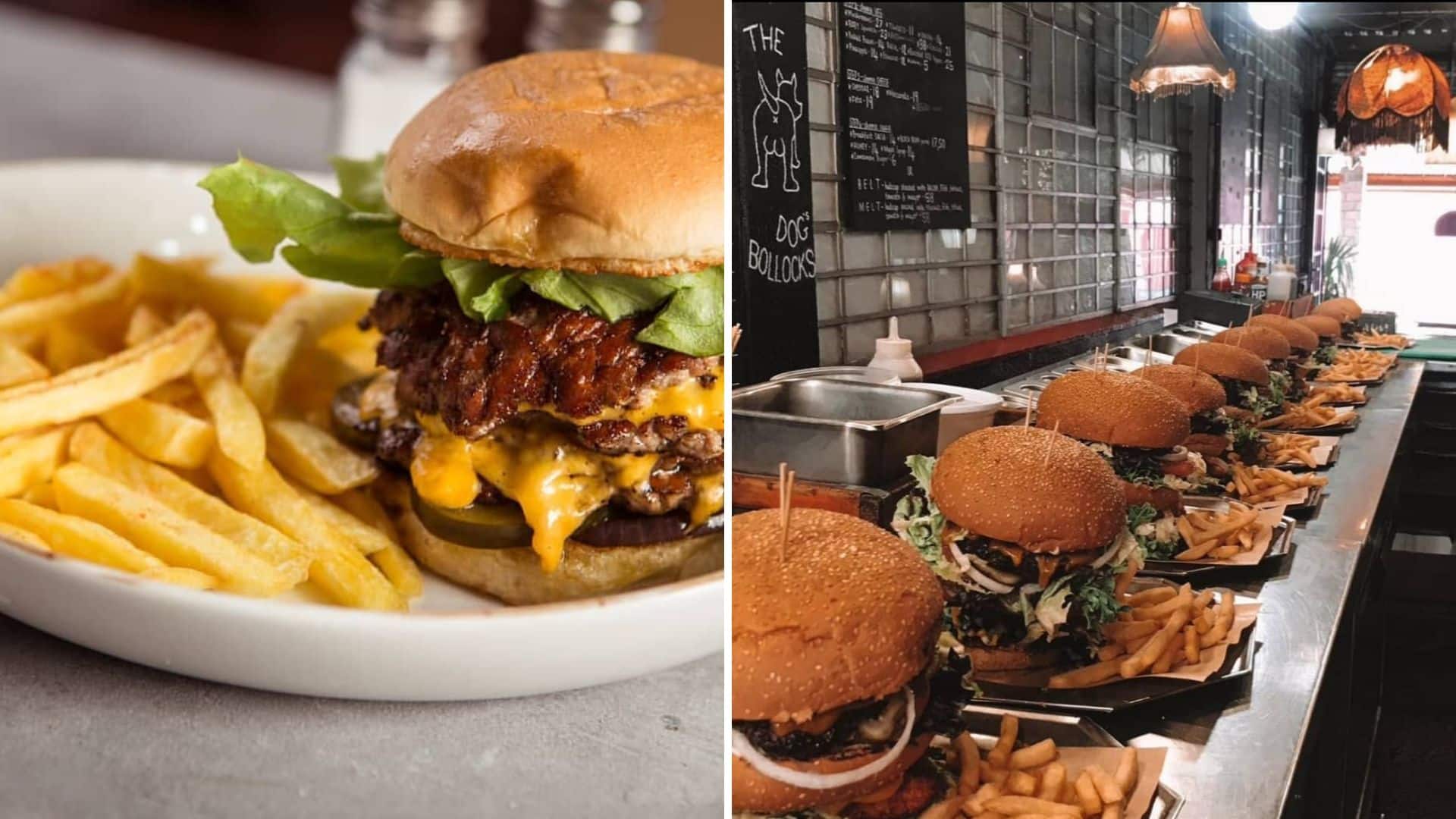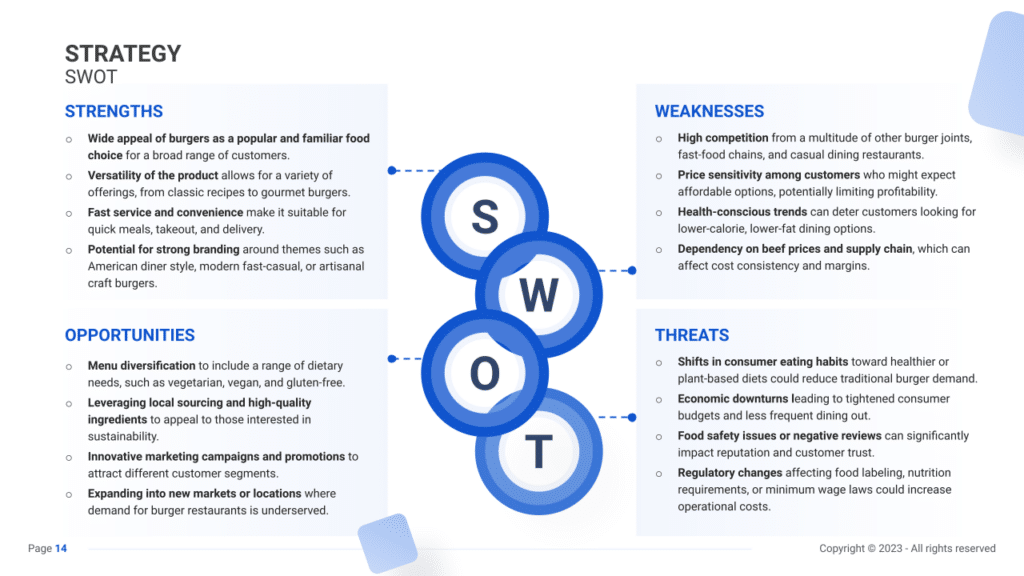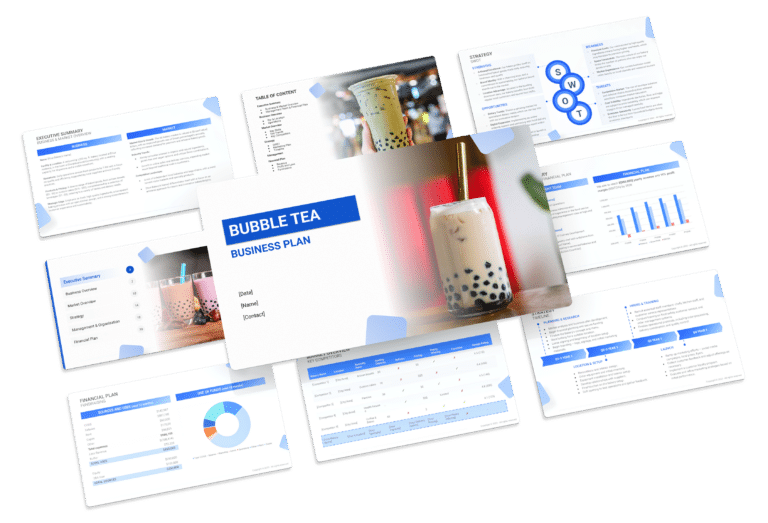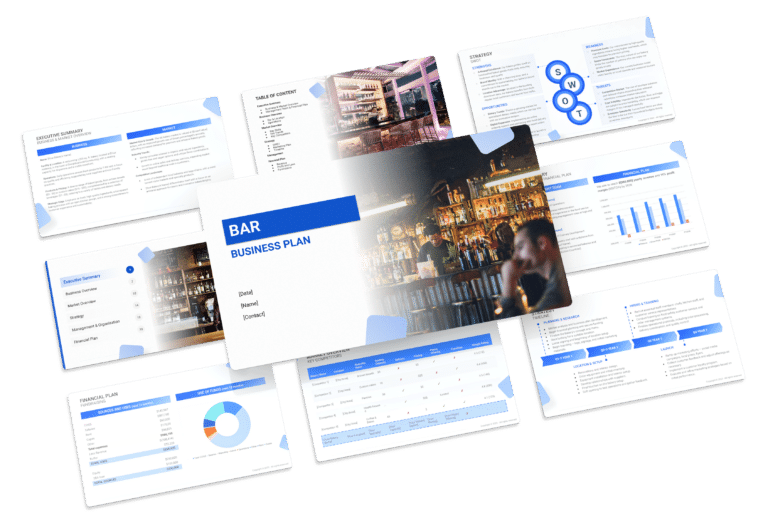How to Prepare a SWOT for a Burger Restaurant

Creating a business plan for a burger restaurant involves a crucial step: a SWOT analysis. This strategy assesses the Strengths, Weaknesses, Opportunities, and Threats affecting the business, both inside and out.
Internally, strengths might include a varied menu and quick service, while weaknesses could be inconsistent food quality or limited marketing. Externally, there are opportunities like new food trends and growing markets, but also threats such as stiff competition or economic downturns.
This article will provide detailed examples of each aspect to help you shape your business plan. Let’s dive in!

Strengths
- Unique Burger Creations: Offering a diverse range of creative and mouthwatering burger combinations can set your restaurant apart.
- Example: Introducing a monthly special burger that incorporates exotic ingredients can generate buzz and draw food enthusiasts.
- Quality Ingredients: Using high-quality, fresh ingredients can result in superior-tasting burgers that keep customers coming back for more.
- Example: Sourcing locally-grown produce and using premium meat cuts can enhance the flavor and reputation of your burgers.
- Atmospheric Ambience: Creating an inviting and comfortable dining environment can encourage customers to linger and return.
- Example: Decorating the restaurant with vintage burger-themed memorabilia can add a unique touch to the ambiance.
- Efficient Kitchen Workflow: A well-organized kitchen layout and streamlined processes can lead to quicker service and customer satisfaction.
- Example: Implementing a digital order management system can reduce wait times during peak hours.
Weaknesses
- Staff Turnover: High turnover rates in the food service industry can lead to inconsistencies in food quality and customer service.
- Example: Offering competitive wages and employee benefits can help retain skilled staff.
- Limited Menu Flexibility: A rigid menu may deter customers with dietary restrictions or special preferences.
- Example: Adding vegan and gluten-free burger options can expand your customer base and cater to a wider audience.
- Location Challenges: An inconvenient or hidden location can limit visibility and accessibility to potential customers.
- Example: Implementing a robust online presence and offering delivery services can overcome this limitation.
- Seasonal Variability: Depending on location, seasonal fluctuations in customer traffic can impact revenue.
- Example: Promoting seasonal burger specials and hosting themed events can counteract slower periods.
Opportunities
- Online Marketing: Leveraging social media, online advertising, and food delivery platforms can reach a broader audience.
- Example: Running targeted Facebook and Instagram campaigns featuring mouthwatering burger photos can attract more customers.
- Food Truck Expansion: Expanding your burger concept to a food truck can bring your food to different locations and events.
- Example: Partnering with local festivals and events can introduce your burgers to a wider, diverse audience.
- Sustainability Focus: Embracing sustainable practices such as eco-friendly packaging and sourcing can appeal to environmentally-conscious customers.
- Example: Highlighting your commitment to sustainability in marketing materials can attract eco-conscious diners.
- Collaborative Ventures: Partnering with local breweries or hosting themed nights can create unique dining experiences.
- Example: Co-hosting “Burger & Beer” nights with nearby breweries can attract beer enthusiasts to your restaurant.
Threats
- Intense Competition: The burger market is highly competitive, with numerous fast-food and gourmet options.
- Example: Offering a loyalty program with discounts and rewards can encourage repeat business.
- Health Trends: Growing health-conscious consumer trends may lead to decreased demand for traditional burgers.
- Example: Introducing a “Build Your Own Healthy Burger” option with lean protein and fresh vegetables can cater to health-conscious customers.
- Economic Downturns: Economic recessions or crises can result in reduced consumer spending on dining out.
- Example: Offering budget-friendly burger combos and promotions during tough economic times can maintain customer loyalty.
- Supply Chain Disruptions: Unexpected events, such as natural disasters or pandemics, can disrupt the supply chain and impact ingredient availability.
- Example: Establishing backup suppliers and building strategic ingredient reserves can mitigate supply chain risks.





